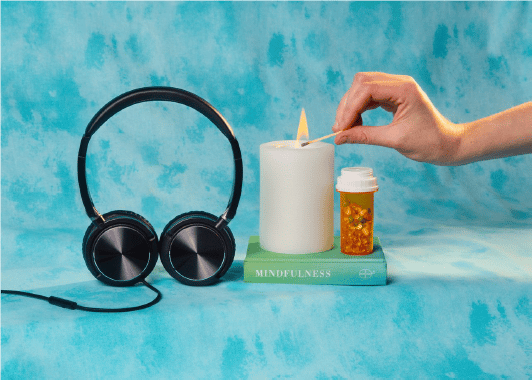OPINION

On the clinical front lines, the COVID-19 public health emergency has radically shifted the way we can practice outpatient medicine.
MATT SCHWERIN/NYT
The United States recently followed the World Health Organization’s lead and declared monkeypox a public health emergency. Meanwhile, the US Department of Health and Human Services announced its public health emergency for COVID-19 would be extended again until at least Oct. 13, 2022, and promised that it would give states and health care providers 60 days notice before the emergency ends.
Declaring a public health emergency means that both federal and state governments can allocate resources, time, and people to advance treatments. It also often means a path forward for health innovation acceleration. In the case of COVID-19, this meant that scientists worked around the clock in applying well-researched technologies such as mRNA and adenovirus vaccines toward a yet unseen and unknown virus and successfully produced safe and effective COVID-19 vaccinations for all people older than 6 months. On the clinical front lines, the public health emergency has also radically shifted the way we can practice outpatient medicine.
Before 2020, telehealth was a sleepy technology, used by few and under limited circumstances. However, declaration of the public health emergency and the radical necessity of telehealth allowed it to explode as a health care innovation. Before 2020, only 0.2 percent of Medicare outpatient evaluation and management visits were rendered via telehealth. This telehealth number skyrocketed to over 50 percent of Medicare outpatient visits by April of 2020. Telehealth opened the door to care for millions who would not otherwise have access to a provider and expanded the capacity of care for some essential services, including access to mental health, contraceptive health, physical therapy, and hospital discharge follow-ups. Under the emergency declaration, the Center for Medicare and Medicaid Services payment reform enabled telehealth’s equitable payment for visits conducted via video or audio, increased coverage for Medicare beneficiaries living in both rural and urban communities, and created parity in pay for physical and mental health.
In my 17 years serving as a primary care physician at a large safety net hospital and as someone who has long been committed to bringing innovations onto the front line for rapid testing and deployment, I have never seen or participated in an innovation such as telehealth — one so poised to both advance health care delivery and address health equity. Indeed, despite daily innovations such as new apps or AI being touted regularly in health care, these innovations are rarely targeted at traditionally marginalized communities. Weaving together equity and innovation oftentimes feels like threading an extremely small needle.
Telehealth deployment over the past two and a half years seems to have done just that. Recently, I was able to conduct a telehealth visit for a patient who had been discharged from the hospital. She was bed bound and living at home where none of her family members spoke English as a first language. The Internet connectivity in their home was poor and though the family members tried to connect the patient to video, the screen kept going black. Additionally, the interpreter’s connection was lost. Knowing that audio only was an option for this patient was a blessing. I was able to reconnect through the telephone with the interpreter where the patient was easily able to discuss how she was doing, review what medications she was discharged on, and next steps for her. We were able to arrange a follow-up in-person visit for her when transportation would be easier for her and her family.
Three years ago, that visit would have been poorly reimbursed (if at all) and very likely that patient’s after-hospital care would have been subpar — creating more opportunities for further illness, readmission, and poor health, and perpetuating the cycle of poverty and poor outcomes. A year from now, this same visit will also risk being cast aside by providers and health care systems as the end of the public health emergency funding also means the end of funding for audio-only telehealth for Medicare beneficiaries.
And so while many may welcome the news that HHS may be winding down the COVID-19 declaration this fall, I’m worried about what this will mean for my patients and people like them who come from traditionally marginalized communities as well as the elderly, those in rural communities, and those who for a panoply of reasons including financial, stigma, or local politics are unable to access the care that they need.
Rapid pace innovations often require the slower build of infrastructures to sustain them. This is certainly the case for telehealth. While telehealth holds the incredible promise of increasing access to medical care for communities that have traditionally been marginalized, thus creating more health equity, the dissolution of PHE funding also means potential devastation and perpetuating health inequities. As my colleagues and I bear witness to this digital disparity and the potential future widening of this divide, we have advocated for:
- Creating federal and state policies to operationalize telehealth infrastructure.
- The rapid build and deployment of telehealth platforms that are accessible and easily navigable to all people (including those whose language, education, or age leaves them with low technology literacy).
- Supporting patients and families during the adoption of these technologies. Until we reach these milestones, we must keep the broad funding and support for telehealth in all of its forms.
Through the wide deployment and use of telehealth, we finally have a chance to make strides toward greater health equity. We cannot lose this precious opportunity when the end of the public health emergency for COVID-19 is finally declared.
Dr. Katherine Gergen Barnett is vice chair of Primary Care Innovation and Transformation in the Department of Family Medicine at Boston Medical Center and a clinical associate professor at the Boston University School of Medicine.
